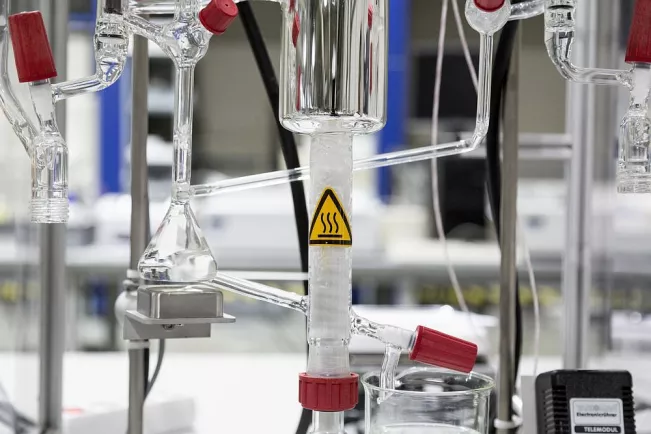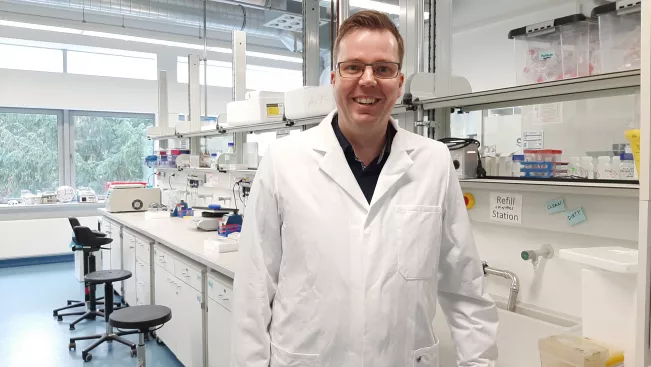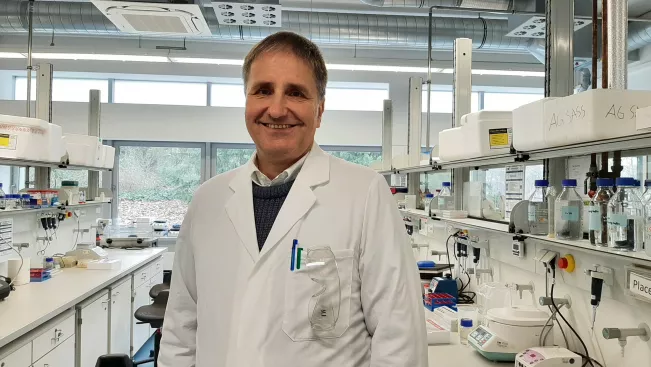Communications and Marketing
H-BRS News: Professor Sass and Professor Althaus on rare diseases

H-BRS: Professor Sass: Rare diseases are rare, as the name already says. Why are you researching specifically in this area?
Jörn Oliver Sass: For the affected people and their families, every disease is important. It does not matter how many people are affected worldwide. For each individual case, knowledge of the causes and mechanisms underlying a disease can be very important. By finding a better way to understand the disease, it is often possible to optimise laboratory diagnostics, but it is also possible to create a fundament for the development of therapy options.
H-BRS: What makes it so difficult to clear up the cause of a rare disease?
Jörn Oliver Sass: First of all, it must be considered that a rare disease could be present. Many of them are so rare that a doctor will not meet more than one patient with them in his entire career. Building awareness of the existence of rare diseases is something that the International Rare Disease Day tries to promote. Many university hospitals have centres for rare diseases that can support the way to diagnosis.
H-BRS: Rare diseases are often genetically caused. In your research you deal with the functional effects of genetic defects. On what do you work exactly?
Mike Althaus: My research group deals, among other things, with genetically determined disorders of ion channels. These are proteins located in the cell membranes that help to regulate the salt concentrations in the body. If we know how these ion channels work and what exactly is modified in such a protein, we can partly make predictions about the development of the disease, or about the classes of medicines that can help.
Jörn Oliver Sass: In my group, they are primarily inborn errors of metabolism disorders. In the laboratory, we research, among other things, the fundamentals of the metabolism for various amino acids as well as their disorders. We are also interested in genetic defects in ketone body metabolism, i.e. diseases due to the fact a type of energy supply that is extremely important in a state of hunger does not work.
H-BRS: Can research on rare diseases help us with the major common diseases?
Mike Althaus: Yes, this is true in several aspects. For example, there is a small number of patients with hypertension who have an altered ion channel that regulates the body's sodium levels. For this group, a completely different therapy strategy is promising than in other cases. But we can also learn from these rare diseases and, for example, expand our basic understanding of blood pressure regulation.
Jörn Oliver Sass: Many people with high blood pressure can benefit from this long-term. Similarly, mechanisms that are being researched in rare metabolic disorders can also be used to draw conclusions about metabolisms and processes in other diseases.
H-BRS: At the Hochschule Bonn-Rhein-Sieg there is no clinic and no patients are in your care. How can you still carry out biomedical research on rare diseases?
Mike Althaus: Because a small number of patients with rare diseases are often distributed among numerous clinics and care facilities, hardly anything in the field of rare diseases can be done without cooperation, usually worldwide cooperation. As a result, cooperation partners are often located hundreds or even thousands of kilometres away. However, we can also analyse many genetic disorders in ion channels functionally in the laboratory by using modern biochemical and physiological methods without having to rely on blood or tissue samples from patients. It's the same with Professor Sass's experimental work.
Jörn Oliver Sass: In the metabolic field, we are working, among other things, on using genetic engineering and biochemical methods to research the functional effects of a genetic defect that was discovered by a patient in Iran. Because we are one of very few research groups in the world doing research on this gene, we have been asked to help. In 2021, for example, we helped colleagues at Münster University Hospital to characterise a newly discovered disorder in the degradation of the amino acid valine. It is also exciting when we can involve H-BRS students and PhD students in such projects and introduce them to the world of research.
Personal details: Prof. Dr Jörn Oliver Sass
Personal details: Prof. Dr Mike Althaus
Press photos: Professor Mike Althaus and Professor Jörn Oliver Sass
Contact

Location
Sankt Augustin
Room
E 240
Address
Grantham-Allee 20
53757, Sankt Augustin
Telephone
+49 2241 865 9560
